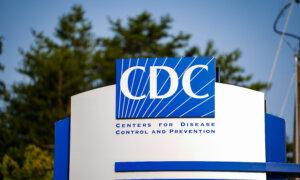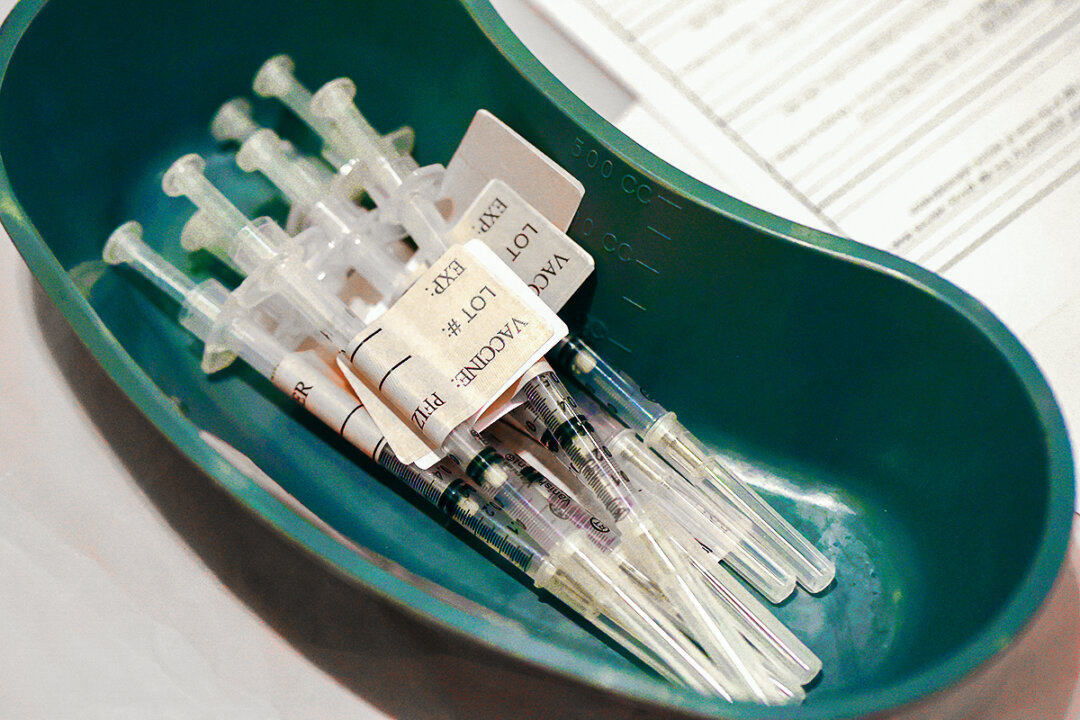COVID-19 Vaccine Protection Among Children Plummets Within Months: CDC Study
Agency says results show why it recommends kids get an updated shot.
Children who received an original COVID-19 vaccine have little protection against hospitalization just months after vaccination, according to a new study from the U.S. Centers for Disease Control and Prevention (CDC).
Children initially have 52 percent protection against hospitalization but that estimated effectiveness plummeted to 19 percent after four months, according to the paper.
Protection against so-called critical illness also dropped sharply, from 57 percent to 25 percent, researchers found.
The study covered children who received two or more doses of the original Pfizer-BioNTech or Moderna COVID-19 vaccines from Dec. 19, 2021, through Oct. 29, 2023.
The study involved children aged 5 to 18 who were hospitalized with acute COVID-19 and tested positive for the illness and compared them to a control group of children hospitalized with COVID-19-like symptoms but who tested negative for COVID-19.
Researchers drew data from the Overcoming COVID-19 Network, which includes health care sites in most of the United States, and ended up with 1,551 case patients and 1,797 in the control group.
The study found that “receipt of ≥2 original monovalent COVID-19 vaccine doses was associated with fewer COVID-19–related hospitalizations in children and adolescents aged 5–18 years; however, protection from original vaccines was not sustained over time,” Laura Zambrano, a CDC epidemiologist, and her co-authors wrote.
It also recorded a similar drop in protection against critical illness, defined as being placed on mechanical ventilation, vasoactive infusions, extracorporeal membrane oxygenation, or dying.
Ms. Zambrano did not respond when asked for data suggesting that the currently available shots provide longer-lasting protection than the original vaccines.
U.S. authorities have been moving COVID-19 vaccines to a once-a-year model, similar to influenza vaccines. The model features updating the formulation of the vaccines on an annual basis, in an acknowledgment that any protection the vaccines give quickly wanes. The formulation is typically updated in the fall.
Just 14 percent of children, and 23 percent of adults, have received one of the newest vaccines as of April 6, according to CDC estimates. The available vaccines are messenger RNA (mRNA) shots from Pfizer and Moderna and an alternative from Novavax.
Dr. Jane Orient, executive director of the Association of American Physicians and Surgeons, noted that, according to the new paper, the maximum effectiveness estimates against hospitalization were 61 percent, regardless of how the data were sliced, that more deaths were recorded among the case patients, and the median hospitalization duration was four days for both groups.
“I do not see how a clinician whose concern is treating patients and whose job does not depend on pushing mRNA vaccines would find this a basis for recommending shots—quite the contrary,” Dr. Orient, who was not involved in the research, told The Epoch Times in an email. “It reeks of conflict of interest.”
Stated limitations of the paper include not assessing post-infection immunity and a lack of sequencing data.
The conflict of interest section runs 688 words and includes some of the authors reporting funding from Pfizer and Moderna or ownership of Pfizer stock.
This article has been archived for your research. The original version from Epoch Times can be found here.






